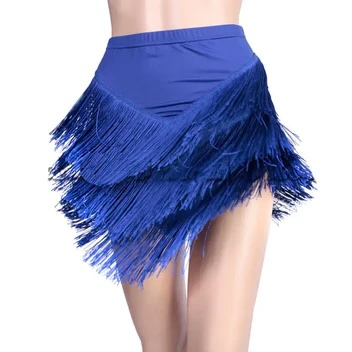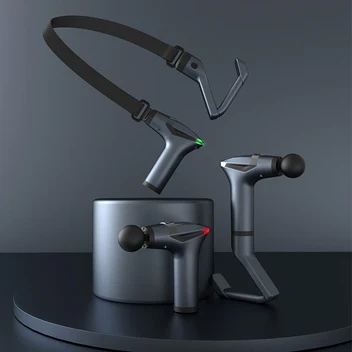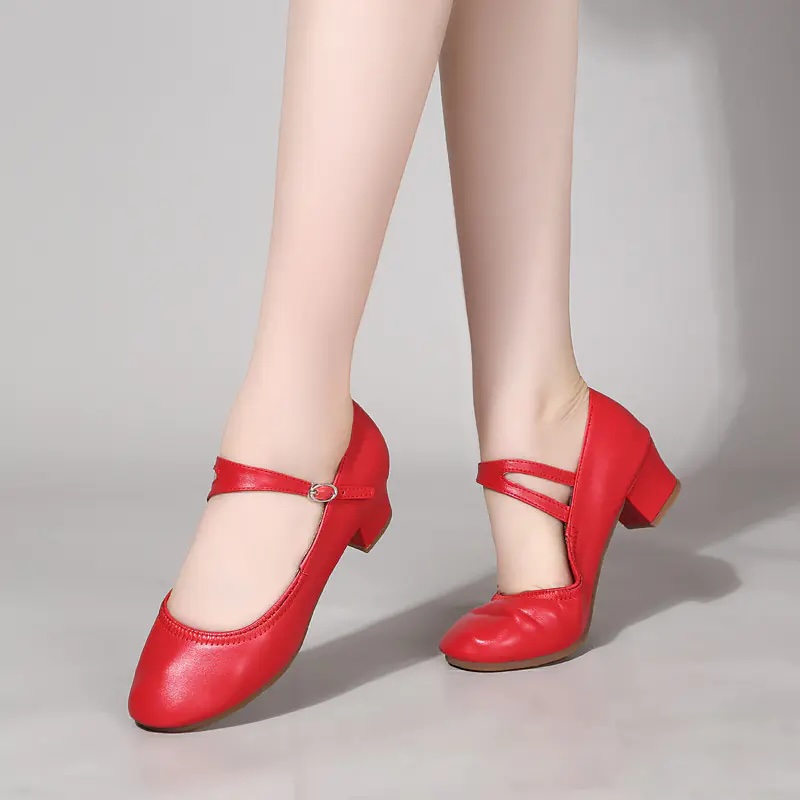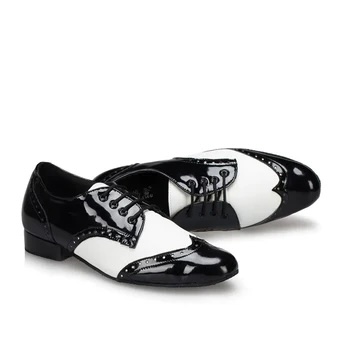Unleash Your Dance Spirit!
Discover premium dance gear, exclusive merchandise, and everything you need to dance your absolute best. Join thousands of passionate dancers worldwide!





Carinosa dance in Philippines: Origin, History, Costumes, Style, Technique, and Music
Exploring the rich tapestry of Philippine culture often leads us to its vibrant traditional dances. Among these, the Carinosa dance holds a special place, captivating hearts with its grace and storytelling.
Many people are curious about how this dance came to be and what makes it so cherished across generations in the Philippines.
The name "Carinosa" means loving or affectionate in Spanish, giving us a clue about its roots and romantic nature. This blog will take you through everything from the origin and history of Carinosa to its costumes, style, technique, music, and even how it is being kept alive today.
With colorful details on every twirl and gesture that define this beautiful courtship dance, you’re in for an insightful journey into Philippine heritage. Ready to step into the world of Carinosa? Read on!
History of the Carinosa Dance
The Carinosa dance has a rich history influenced by Spanish colonialism in the Philippines. The name "Carinosa" is derived from the Spanish word "cariñosa," which means affectionate or lovable, reflecting its flirtatious courtship movements.
Spanish influence on Philippine dances
Spanish invaders introduced many aspects of their culture to the Philippines, including dance forms that deeply embedded into the fabric of Philippine performing arts. These dances showcased not just European techniques but also reflected the social dynamics and narratives of Spanish society.
They brought with them a range of folk dances, such as the Jota and Flamenco, which Filipino dancers adapted to create a unique blend that resonated with local traditions and sensibilities.
The influence extended beyond mere movements; it instilled an etiquette and formality in performances, highlighting themes of courtship and love that were prevalent in rural life in the Philippines.
Dances like the Carinosa became emblematic of this fusion—incorporating flirtatious gestures reminiscent of Hispanic origin while remaining grounded in Philippine folk dance traditions.
This mix enriched the cultural landscape, making dance an important vessel for storytelling within communities.
Dance is a hidden language of the soul.
Meaning and origin of the name "Carinosa"
The name "Carinosa" is derived from the Spanish word "cariñosa," which translates to loving or affectionate. This traditional dance in the Philippines is known for its flirtatious and amiable character, reflecting the playful yet respectful mannerisms of Filipino women.
The dance originated on Panay Island and forms part of the Maria Clara suite, a set of traditional Philippine dances that emulate the modesty and grace of Filipina women during the Spanish colonial era.
The Carinosa dance captures the essence of love and courtship, as it showcases intricate movements symbolizing affection between male and female dancers. Its Hispanic origin permeates through its graceful gestures and lively steps paired with traditional music, making it an endearing cultural treasure in the realm of ethnic dances within Southeast Asia.
Evolution and popularity of the dance
The Carinosa dance has evolved over time, gaining popularity not only in the Philippines but also internationally. It has become a beloved cultural icon, representing the rich heritage and traditions of the Filipino people.
The flirtatious and affectionate nature of the dance, combined with its lively and rhythmic movements, has contributed to its widespread appeal. As a result, it continues to be performed at various events and celebrations, captivating audiences with its graceful charm.
The evolution of the Carinosa dance reflects how it has adapted to modern times while staying true to its traditional roots. This adaptability has allowed it to remain relevant and appreciated by new generations who continue to embrace this iconic Philippine folk dance.
Costumes and Style of the Carinosa Dance
The traditional Philippine attire for the Carinosa dance includes vibrant and colorful dresses for female dancers, with characteristic movements and gestures that reflect affectionate interaction.
The importance of male-female partnership is emphasized in the dance, adding a flirtatious yet graceful element to its style.
Traditional Philippine attire
The traditional Philippine attire worn during the Carinosa dance embodies the rich cultural heritage of the Philippines. Women gracefully wear a Maria Clara dress, which is characterized by a floor-length skirt adorned with delicate lace and floral patterns.
The conservative yet elegant blouse features puffed sleeves and a high neckline, reflecting modesty and grace. Completing the ensemble are accessories such as the pañuelo (shawl) draped over one shoulder and a fan held delicately in hand, enhancing the fluidity of movements.
In contrast, men don barong Tagalog, an embroidered formal shirt often paired with dark trousers or slacks. This traditional attire emphasizes both elegance and dignity while celebrating Philippine customs.
As dancers whirl and twirl during the Carinosa dance, their traditional Philippine attire adds to the charm of this flirtatious performance. Through coordinated footwork and endearing gestures, women’s skirts gently sway while fans create captivating visuals in sync with graceful movements.
Characteristic movements and gestures
The Carinosa dance is known for its graceful and fluid movements, with dancers delicately incorporating fan-like gestures to represent a sense of flirtation and affection. The female dancer's mannerisms include gentle swaying, coy glances, and demure hand placements that embody the traditional charm of Filipina women.
Additionally, the male counterpart displays gallant gestures such as formal bowing and chivalrous courtship movements as a testament to the importance of male-female interaction in the cultural dance.
These characteristic movements and gestures not only showcase the unique style of this folk dance in the Philippines but also highlight its significance in portraying affectionate storytelling through movement.
As part of Panay Island's rich heritage, these evocative movements are synchronized with rhythmic footwork that complements the spirited music accompanying the dance. Furthermore, intricate partner formations emphasize coordination between male and female dancers, illustrating elegance and grace while celebrating Philippine culture.
Grounded by traditional Filipino values, where respect and modesty play a significant role in interactions between men and women, these characteristic movements serve to honor an enduring cultural tradition rooted deeply within Southeast Asian dance.
Importance of male-female interaction in the dance
Male-female interaction in the Carinosa dance is fundamental to its essence. Partners engage in graceful movements, portraying flirtatious exchanges and affectionate gestures. This interaction embodies the traditional Filipino values of respect, love, and courtship.
It showcases the harmonious relationship between men and women through synchronized steps and coordinated hand gestures. The dance serves as a testament to the significance of mutual admiration and gallantry between male and female dancers, embodying the cultural heritage of the Philippines.
The Carinosa's unique choreography emphasizes the interplay between male and female dancers, unfolding a captivating narrative of romance and admiration within Philippine culture.
Technique and Music in the Carinosa Dance
The Carinosa dance involves intricate footwork and graceful arm movements, accompanied by traditional Filipino music played on instruments like the guitar and violin. To learn more about these captivating elements of the Carinosa dance, read on.
Dance steps and formations
The Carinosa dance comprises a combination of lively steps, characterized by the dancers' graceful and elegant movements as they curtsy and bow. The dance typically involves a series of steps such as:
- Al paso - a simple marching step that begins the dance.
- Jaleo - a lively and flirtatious step incorporating swaying hips and shoulder movements.
- Chassé - a gliding step where partners perform side-close-side movements in unison.
- Arco - dancers form an arch while holding handkerchiefs, symbolizing unity and harmony.
- Paseo - a stroll around the dance floor showcasing the fluidity and grace of the participants.
The formations often include dancers weaving intricate patterns with their partners, creating visually captivating displays that showcase the charm and allure of this traditional Filipino dance.
Traditional instruments used in the music
The Carinosa dance is typically accompanied by traditional Filipino musical instruments. The ensemble may include the banduria, a type of mandolin with 14 strings; the octavina, a smaller guitar-like instrument; and the guitar.
These instruments produce lively melodies that complement the flirtatious and affectionate dance movements of the performers. The music played on these instruments underscores the graceful style and technique of the dancers, creating an atmosphere that captures the essence of this national Philippine dance.
In addition to stringed instruments, percussions such as tambourines and drums provide rhythmic accompaniment for the Carinosa dance. The combination of lively plucked strings and rhythmic percussion evokes a vibrant energy that enhances every movement in this captivating cultural expression.
Cultural significance of the music and its influence on the dance
The traditional music that accompanies the Carinosa dance holds immense cultural significance in Philippine history. The rhythmic beats and melodies of the music not only set the pace for the dancers but also convey the rich heritage and storytelling traditions of Filipino culture.
The use of traditional instruments such as bandurrias, guitars, and drums further enhances the authenticity of this influential dance form.
The influence of music on the Carinosa dance cannot be overstated as it shapes the mood, tempo, and emotional expression during performances. The intricate harmonies and lively rhythms evoke a sense of joy and celebration, enriching the overall experience for both dancers and audiences.
Modern Interpretations of the Carinosa Dance
Modern interpretations of the Carinosa dance have seen its incorporation into various aspects of modern Philippine culture, showcasing a fusion with contemporary dance styles and music.
The dance has evolved to reflect the ever-changing cultural landscape while still maintaining its traditional essence.
Incorporation in modern Philippine culture
The Carinosa dance has continued to be a significant part of modern Philippine culture. Its traditional roots and flirtatious movements have made it a popular choice for various cultural events and celebrations, showcasing the grace, fluidity, and elegance of Filipino women.
This Hispanic-origin dance has undergone evolutions over time but still holds an essential place as one of the national dances of the Philippines. The incorporation of the Carinosa in modern Philippine culture speaks to its enduring relevance and importance in preserving the country's rich heritage.
Furthermore, in contemporary settings, the Carinosa dance has seen fusion with other dance styles, adding new dimensions while maintaining its distinct character. It is often performed alongside traditional music featuring indigenous instruments, enhancing its cultural significance.
Fusion with other dance styles
Carinosa dance has evolved over time and has been influenced by various other dance styles. The fusion with other dance forms such as ballet, folk dances, and contemporary movements has added a new dimension to the traditional Carinosa.
This fusion brings together the grace and elegance of Carinosa with the technical elements of these other styles, creating a unique and captivating performance.
In modern interpretations, Carinosa is often combined with elements from ballroom dancing, adding intricate footwork and partnering techniques to enhance the overall presentation. Additionally, some choreographers have infused hip-hop or street dance into the traditional Carinosa to create an innovative blend that appeals to younger audiences while preserving its cultural essence.
Conclusion
To conclude, the Carinosa dance in the Philippines embodies a rich history of Spanish influence and Philippine cultural heritage. The flirtatious yet elegant style and traditional costumes make it an engaging and visually captivating performance.
The combination of technique and music creates a dynamic experience that showcases the unique beauty of Philippine dance. As this dance continues to evolve, its preservation and modern interpretations highlight its significance as the national dance of the Philippines.
Practicing or exploring this art form not only preserves tradition but also provides a gateway to understanding Philippine culture more deeply.
FAQs
1. What is the Carinosa dance?
The Carinosa dance is a traditional flirtatious dance in the Philippines, known for its Hispanic origin. It showcases the romantic and gentle mannerisms of Filipina women.
2. Where did the Carinosa dance originate?
This graceful dance originated from Panay Island in the Philippines and has become a beloved national dance that reflects Filipino culture and history.
3. What do dancers wear when performing the Carinosa?
Dancers performing the Carinosa wear traditional Filipino costumes that add to the beauty and elegance of this historic dance form.
4. How is music important to the Carinosa dance?
Music plays a crucial role in setting the mood for the Carinosa, with traditional instruments enhancing its style, technique, and overall performance atmosphere.
The Secret Language of the Fan: Decoding the Carinosa Dance Quiz
Test your knowledge about the secret language of the fan: decoding the carinosa dance




 Sign in with Google
Sign in with Google